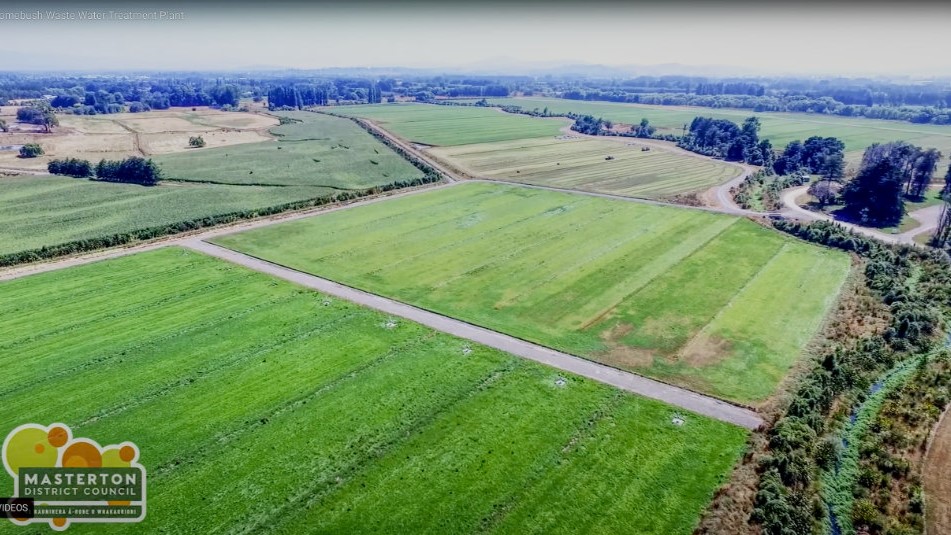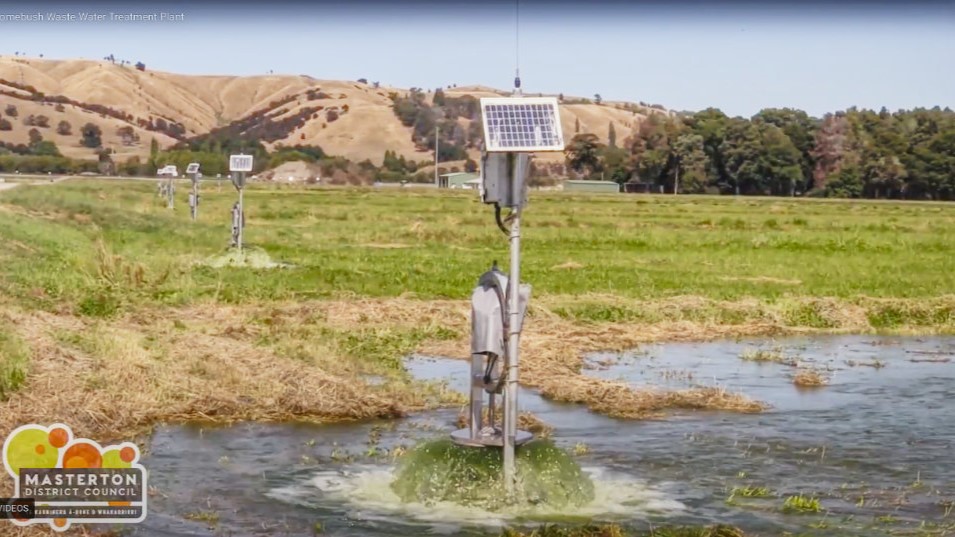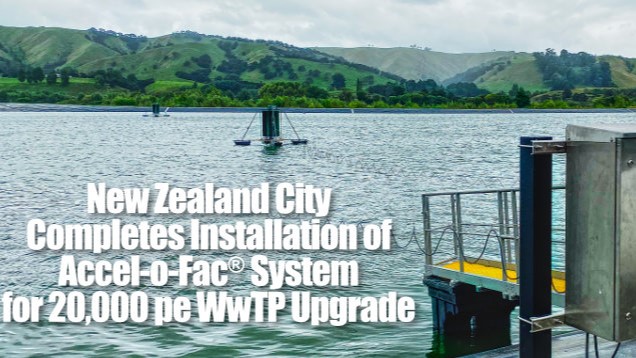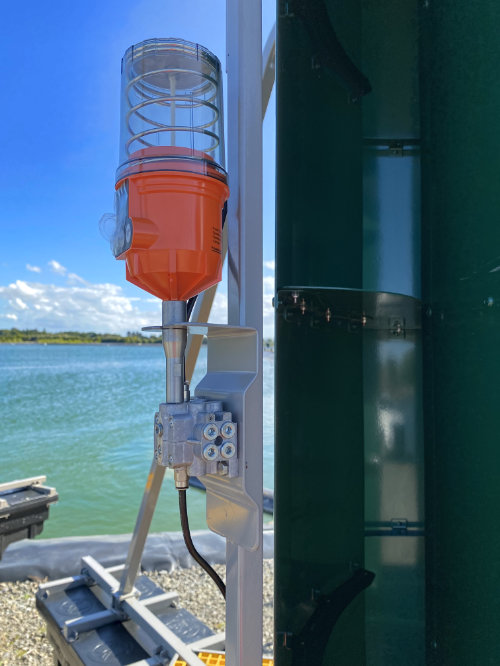Following study and planning by both New Zealand local officials and Gurney Environmental, the company installed an Accel-o-Fac® wastewater treatment system that includes SERIES 3 zero-to-low energy wind powered aeration units for retrofit to the WwTP at the Homebush WwTP outside Masterton, New Zealand. This installation follows a similar installation at Nelson, New Zealand in 2017.
The Zero-to-Low Energy Accel-o-Fac® windpowered system fits in with Masterton’s eco/sustainability focus of seeking out significantly greener and more sustainable options. The Masterton WwTP features a unique Grass Plot system surrounding the WwTP that provides an eco-sustainable, low carbon footprint method of nutrient removal at low cost. Using Gurney Environmental’s renewable energy wind power to enhance removal rates within the treatment cells solves numerous issues such as odour control, sludge digestion, BOD removal and other removal acceleration. And all with little ongoing operating costs or energy.
Meeting the challenges of climate change
Employing the wind powered Accel-o-Fac® Nature Based System is uniquely suited to meet the many challenges of climate change with an extremely low carbon footprint, no sludge production or handling, no odour, no CSOs, plus energy-free disinfection, thereby making effluent suitable for irrigation water re-use or safe-bathing waters whether discharged to river or sea.
The Accel-o-Fac® upgrade will be used to significantly improve overall treatment within the WwTP whilst also controlling odour, digesting sludge and improving disinfection.

Nutrient removal with grass plots – a cost effective nature based solution
The Masterton WwTP utilises a cost effective natural method for nutrient removal by applying the treated wastewater to multiple grass strips. Creating the treatment cell border dykes involved dividing the land into strips and grading them until they were level. Large valves open at one end releasing thousands of litres of treated effluent onto the land and flooding each strip one by one. Grass crops are planted on these strips which are harvested for baleage. The net effect is low cost nutrient removal as well as improving soil health by re-establishing the organic structure so that it can do the best possible job of filtering the wastewater and absorbing nutrients.
With this system, treated wastewater is irrigated to 100 hectares of Council-owned land on a seven to ten-day cycle, depending on weather conditions and the time of the year. When groundwater is high after lots of rain and it’s not possible to irrigate to land, discharge is made to a nearby river. The grass growing on the border strips is harvested as baleage and sold for animal food. Strict conditions apply to the production and testing of the baleage to make sure it’s safe for animals to eat.





